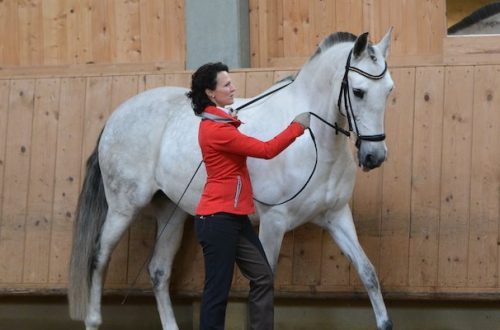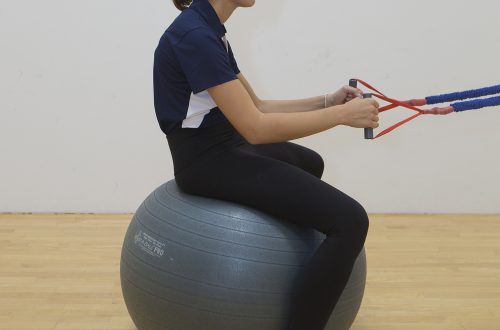
Check-in errors (+ video)
Riding is the most important stage in training a riding horse. Incorrectly carried out, a ride can not only frighten the horse or lay the foundation for the acquisition of bad habits under the saddle, give rise to the desire to get rid of the rider, but also lead to injury to the animal.
Unfortunately, in practice, the race is often treated too carelessly, making many mistakes. Wishing to quickly sell a young horse as already “hackneyed”, people do not think about what an “express ride” can turn out to be for the future owners of the animal, and for himself …
Consider the main mistakes made during the race in more detail.
1. Check-in too early. The fact is that before a young horse can carry at least minimal riding loads, its body must be sufficiently formed. It is important to prevent injury to her growing skeleton. A horse that has been trained too early can begin to suffer from back and limb problems with age. The same principle works here, why children under a certain age are not attracted to professional sports.
It is not recommended to drive horses younger than 2,5 years. Here, however, it should be noted that for horses of certain late-ripening breeds (Hanoverian, Trakehner, Latvian, etc.), it is recommended to postpone the race until a later date. The height of the horse also matters. The more intensively the animal grows in the first years of life, the higher its growth, the more carefully (and later) it is necessary to approach its race. In some cases, it is better to wait even up to 4 years, but do no harm.
2. The horse is not ready physically and mentally. You can’t just take a saddle, put it on the horse’s back, sit on top and try to sit on the “rodeo” you organized. For the horse, such actions will come as a shock, and his first desire will be to get rid of the rider in any way possible. Such a “collective farm” method is used by “specialists” all the time, but if your horse is dear to you, do not do this. After such a ride, the horse is very difficult, and sometimes almost impossible to correct. She will not be able to correctly understand your messages, will not trust the iron and, as a result, you will not be able to work on her physical development.
Before your first seat in the saddle, the horse must undergo a lengthy training on the lunge: it must learn to bend, interact with your hand through the lunge, relax, understand commands given not only by voice, but also through the action of the lunge (canter, trot, step). Finally, she must get used to the saddle, to the presence of a saddle on her back. For some time it is useful for a horse to work on a lunge saddled, but without a rider. Only after that you can try to sit in the saddle. The race will be calm, without resistance and misunderstanding. The horse will be relaxed.
3. Traveling alone. To make the task as easy as possible for the rider and the horse, an assistant, a cord, who will also interact with the horse, should take part in the race. It will help you get your horse forward for the first time.
4. Abuse of cord and rein. It is very often possible to observe when, during a ride, two or more helpers hold a resisting horse on the lunge, pulling it to lower it from the candle, and the rider, in turn, clutching the horse with his feet, holds on to his mouth with a rein. Acting in this way, you can permanently discourage the horse from moving forward, trusting the reins and your hand. You will never be able to make a decision and instead of elementary canter rises you will receive only acceleration. The horse will not be able to show the correct gaits: he will move his legs under him, without working his back, without bending his joints – you will not see a beautiful relaxed trot, canter or step, with the capture of space. The horse will be afraid to move forward. She will learn to run with her head up, her back arched, flailing her legs under her. Through this tight, arched back, she will not feel your body, but from the leg send, she will jump forward, picking up speed, and not increasing her step. To put it simply, you will get a horse suitable only for hire: left rein, right rein – turn, on yourself – stop, heel to side – trot, disperse – gallop …
Remember! Never stop the horse with the reins (this also applies to cords). Even if the horse is bouncing or flashing, both the rider and the cord must move it forward, into contact with the hand, without hanging on the cord, without trying to lower it down. The horse should simply be sent forward by voice commands, prompts of the barrier. If the horse is mentally and physically prepared for the race, he will quickly calm down and will not lose confidence in the bit, will not close.
5. Rush. This is the main enemy of a competent race. Usually, the horse should be preceded by a full-fledged work on the lunge for six months (at least). Before the matter comes to the first landing in the saddle, it is necessary to prepare the animal. The horse should not run with its head up or turned to the side, straight as a board, shy away from the shambler, break away from his prompts into a gallop. The horse must understand the halts, change the pace of movement, make transitions, and, most importantly, be relaxed and calm! You can meet a lot of horses who, already carrying a rider, do not know how to lunge. At the same time, their riders understand to me why they have so many problems: the horse does not do elementary things, does not know how to walk, hurries, stumbles and paces, and pouts and goats on the promises.
Let’s illustrate with the help of a video what an ideal race should look like.
The horse is physically prepared, knows the lunge. The first landing in the saddle is going well. Walk, trot – everything is calm! the horse is a little nervous, as evidenced by the swinging of the head, but still relaxes, reaching for the reins.
And here are examples of how it should not be. The horse, instead of accepting the rider, learns to get rid of him, tenses up. She develops fear and distrust of the snaffle, the horse learns to back away.
Valery Smirnova (personal page of the author in VK)




